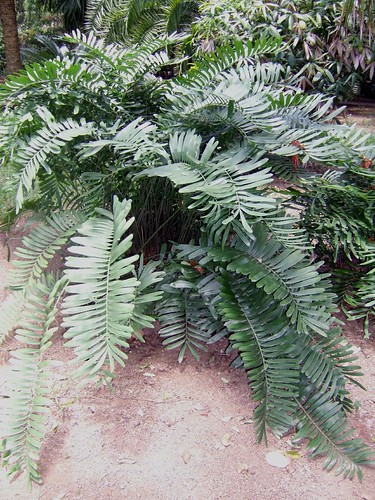You may have noticed I have a bit of a thing for cycads (see this post, this post and this post). I took a stab at the reasons why in the first of those links but a recent post at Pharyngula kind of drove at another of my reasons:
"actually, if there are any objects of reverence among evolutionary biologists, it would be the evidence — the bones of Lucy, of Archaeopteryx, of Tiktaalik, the little trilobite in shale that I keep by my hand at my office desk."
I love the fact that the tiny Encephalartos lehmannii seedling I left at my parents house when I moved out here and which has put out exactly 7 leaves in almost as many years is pretty much unchanged from plants that existed millions of years ago and my little seedlings connect me with that natural world from so many years ago. Also they look cool and are pretty rare. Anyway enough philosophising, onto the pictures and whilst I miss my little seedling collection, the benefit of being out here in the tropics is I get to see full sized plants more often. This is one of the more commonly seen cycads in the horticultural world; Zamia furfuracea. This is Zamia amblyphyllidia, a Puerto Rican species. I like the way these little clump forming Zamia spread and grow pretty quickly; they seem a little more "modern" than some other genera. They can look a little messy though.
However almost all cycads, however messy, will ultimately reward you with a piece of stunningly perfect geometric beauty if you look hard enough. In this case, a few cones were just pushing their way out of the crowns.
This is one of a number of cycads that are unlabelled in a collection near to me and as such the identification is a best guess based on my own and others' assessment of the plant and the photo's above and so may be best treated with a pinch of salt.


No comments:
Post a Comment